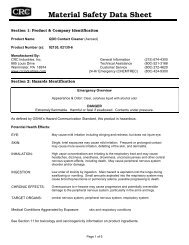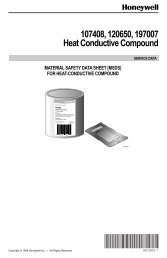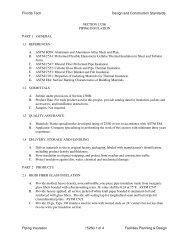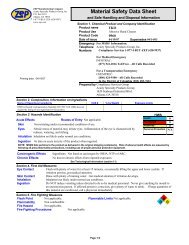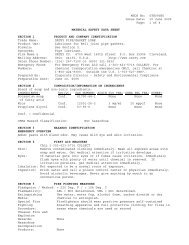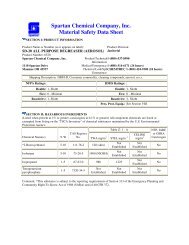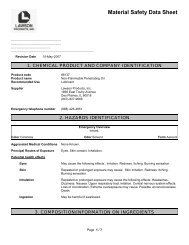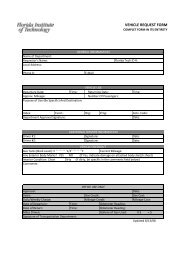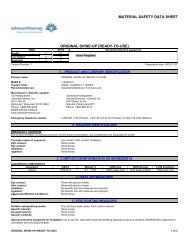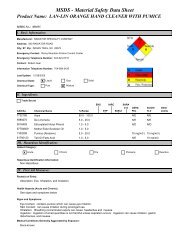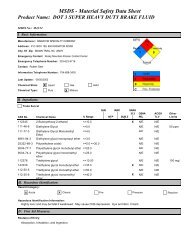Praxair Material Safety Data Sheet - GE Industrial Systems
Praxair Material Safety Data Sheet - GE Industrial Systems
Praxair Material Safety Data Sheet - GE Industrial Systems
You also want an ePaper? Increase the reach of your titles
YUMPU automatically turns print PDFs into web optimized ePapers that Google loves.
Product: Acetylene, Dissolved P-4559-J Date: December 2006Other Protective Equipment. As needed, wear hand, head, and body protection, which helpto prevent injury from radiation and sparks. See ANSI Z49.1. At a minimum, this includeswelder’s gloves and protective goggles, and may include arm protectors, aprons, hats, andshoulder protection, as well as substantial clothing. Regardless of protective equipment, nevertouch live electrical parts.9. Physical and Chemical PropertiesAPPEARANCE:Colorless gasODOR:Acetylene of 100% purity is odorless, butcommercial acetylene has a distinctive,garlic-like odor.ODOR THRESHOLD:Not available.PHYSICAL STATE:Gas at normal temperature and pressurepH:Not applicable.SUBLIMATION POINT at 1 atm:-118°F (-83.3°C)MELTING POINT at 10 psig (170 kPa abs):-116°F (-82.2°C)BOILING POINT at 10 psig (170 kPa abs):-103.4°F (-75.2°C)FLASH POINT:-0°F (-17.8°C)EVAPORATION RATE (Butyl Acetate = 1):Not applicable.FLAMMABILITY:FlammableFLAMMABLE LIMITS IN AIR, % by volume: LOWER: 2.5% UPPER: 100%VAPOR PRESSURE at 70°F (21.1°C):649.6 psia (4479 kPa abs)*VAPOR DENSITY at 32°F (0°C) and 1 atm: 0.07314 lb/ft 3 (1.1716 kg/m 3 )SPECIFIC GRAVITY (H 2 O = 1):Not applicable.SPECIFIC GRAVITY (Air = 1) at 32°F (0°C) and 1 atm: 0.906SOLUBILITY IN WATER vol/vol at 32°F (0°C): 1.7PARTITION COEFFICIENT: n-octanol/water: Not available.AUTOIGNITION TEMPERATURE:581°F (305°C) at 1 atmDECOMPOSITION TEMPERATURE:Not available.PERCENT VOLATILES BY VOLUME: 100MOLECULAR WEIGHT: 26.04MOLECULAR FORMULA: C 2 H 2*Maximum cylinder pressure: 250 psig (kPa) at 70°F (21.1°C)10. Stability and ReactivityCHEMICAL STABILITY: Unstable StableAcetylene is stable as shipped. Avoid use at pressures above 15 psig (103 kPa).CONDITIONS TO AVOID: Elevated temperature and pressure and/or the presence of acatalyst.INCOMPATIBLE MATERIALS: Copper, silver, mercury, or their alloys; oxidizing agents; acids;halogens; moisture.HAZARDOUS DECOMPOSITION PRODUCTS: Thermal decomposition or burning mayproduce CO/CO 2 H 2 . The welding and cutting process may form reaction products such as COand CO 2 . Other decomposition products of normal operation originate from the volatilization,reaction, or oxidation of the material being worked.Page 5 of 10




